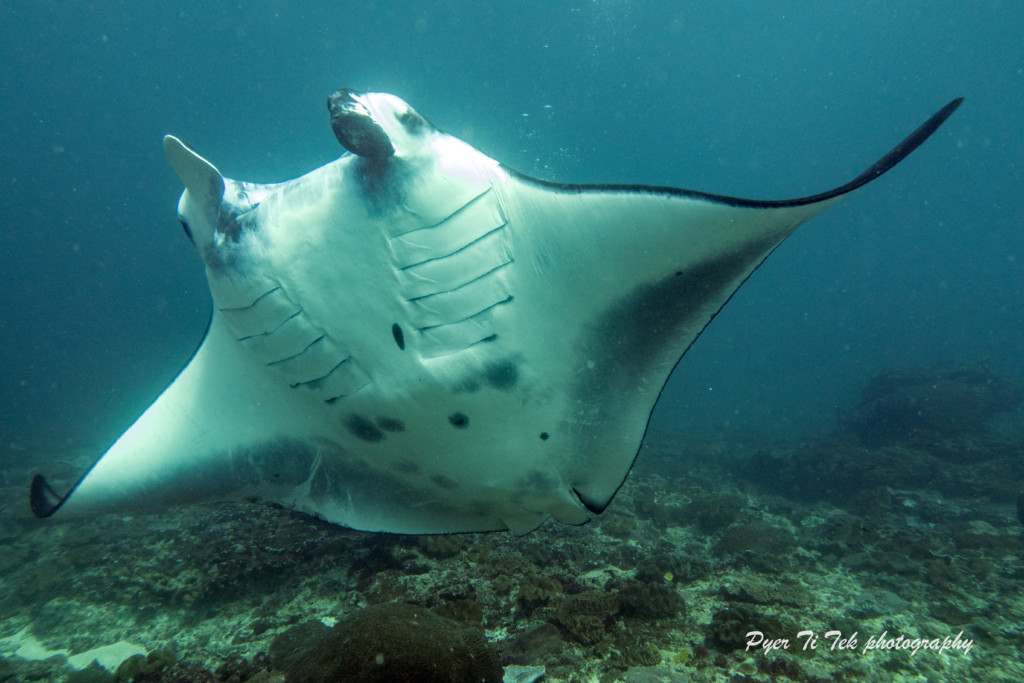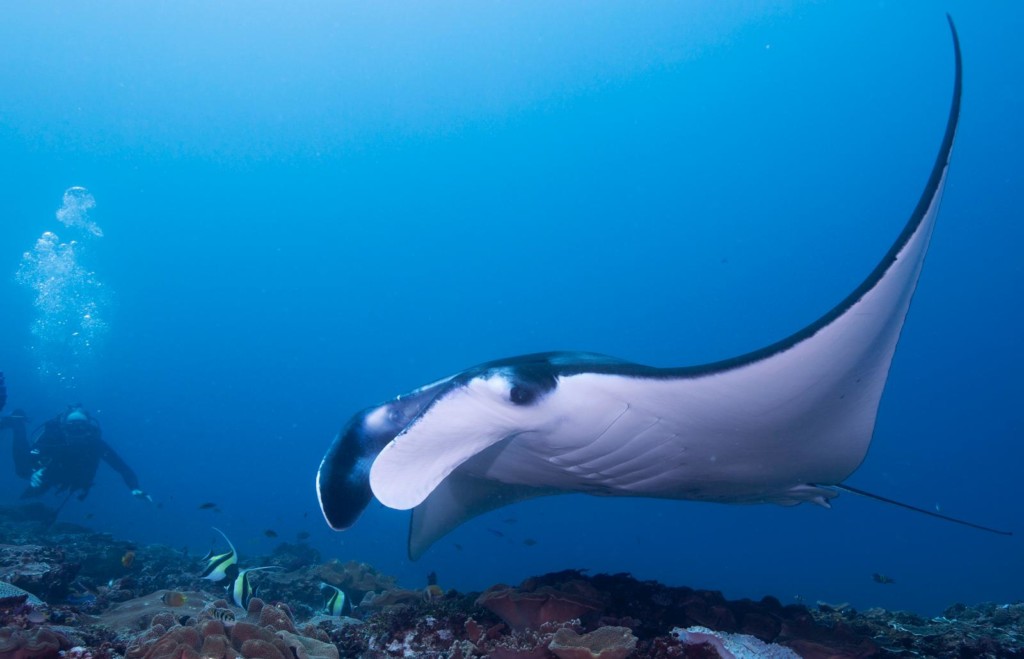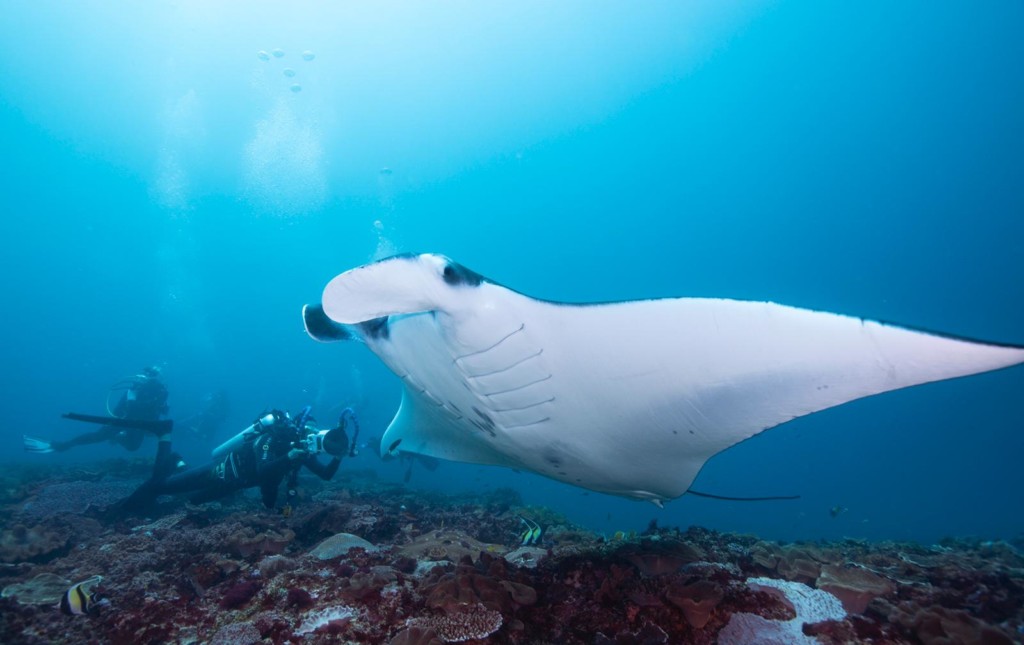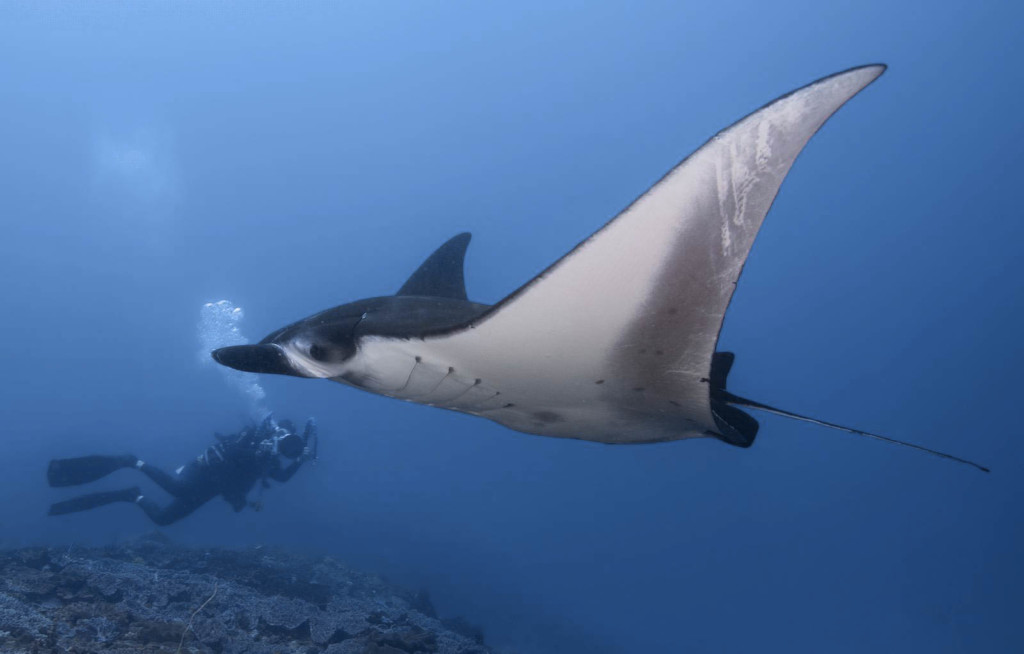Manta rays are amazing creatures. They are in fact in the same family as sharks but they are so different from each other. Manta rays are closely related to other rays and guitar fishes. The difference is, other than their size, they are not constrained to the bottom of the sea, they swim within the water column with their majestic wing-like pectoral fins. There are 2 species of mantas: the Mobula alfredi commonly known as the Reef Manta and the Mobula birostris commonly known as the Giant Oceanic Manta.
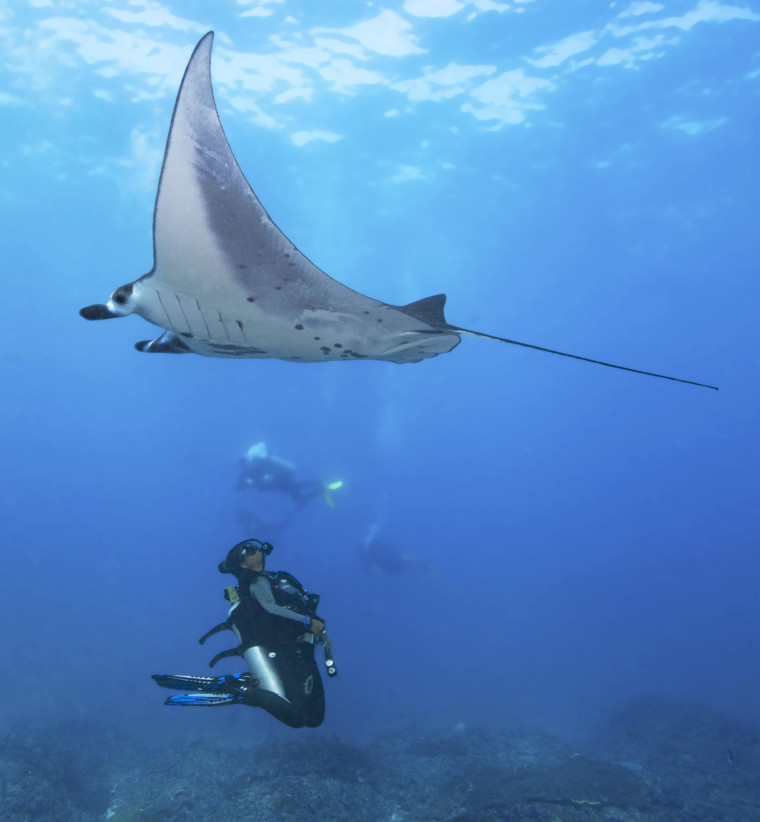
Generally, both mantas have the same flat body with triangular pectoral fins, small stick-like boneless tail, small dorsal fin at the base of their tail, cephalic fins on the sides of their large flat mouth and their eyes behind them. To differentiate between the two species, there are some points to take notes off.
- The first one is the color of the dorsal side; the reef mantas have an even black coat with blurred white patches while the oceanic mantas have white patterns near their eyes.
- Secondly, their bellies; the reef mantas have black dots like dalmatians while the oceanic mantas have sweeping black-greyish shade on the edge of their body.
- And third, their size; reef mantas, while still considered huge, is a few feet smaller than the oceanic mantas.
One popular spot to dive with mantas is the Manta Point and Manta Bay just off Nusa Penida Island in Bali. Reef Mantas, including those displaying the rare black morph, can be found throughout the year but August to October is considered to have the best conditions. The other diving spot many considered as the best site for spotting mantas is Raja Ampat. Manta Ridge, Manta Sandy, Eagle Rock, and Wayag Lagoon are all great sites for Reef Manta Rays. On the other hand, Blue Magic consistently hosts Oceanic Manta Rays, and at Magic Mountain, you can see the two species together. Komodo Island is also a popular choice, especially for liveaboards.
Mantas are gentle giants but that doesn’t mean we don’t need precautions when diving with them. Here are some tips courtesy of swimwithmantas.org for you when diving with manta rays.
- Enter the water quietly and calmly, no closer than 10 meters the manta ray.
- Keep your fins below the water’s surface when swimming. Splashing and noise can scare mantas away, so you want to approach the manta as quietly as possible.
- Do NOT approach closer than 3 meters. Instead, remain still and let the manta come to you.
- You should approach the manta from their side, giving them a clear path ahead.
- As the manta swims past you, do NOT chase after them! You will likely scare them away.
- Do NOT touch a manta ray. You will ruin the encounter and may receive a fine depending on local laws.
- Chances are if you are diving with a manta, you will be encountering them on a cleaning station. These are important sites for manta rays. During the encounter, remain at the side of the cleaning station. Do NOT swim onto the main cleaning area.
- Keep low and hover close to the seabed, but be careful not to damage the reef beneath you. Depending on the dive site, you may need to stay in an area designated for divers.
- When a manta swims towards you, do NOT block their path as they swim overhead. Stay low and stay where you are.
- In addition to the above steps, be sure to follow any extra rules, laws and regulations that may be specific to the manta site you’re visiting.
Diving with manta rays is a fantastic and unforgettable experience. We hope with this information, both you and the manta rays can enjoy the experience of diving together.






